Generalized Iris Presentation Attack Detection Algorithm under Cross-Database Settings
Mehak Gupta,
Vishal Singh,
Akshay Agarwal,
Mayank Vatsa,
Richa Singh
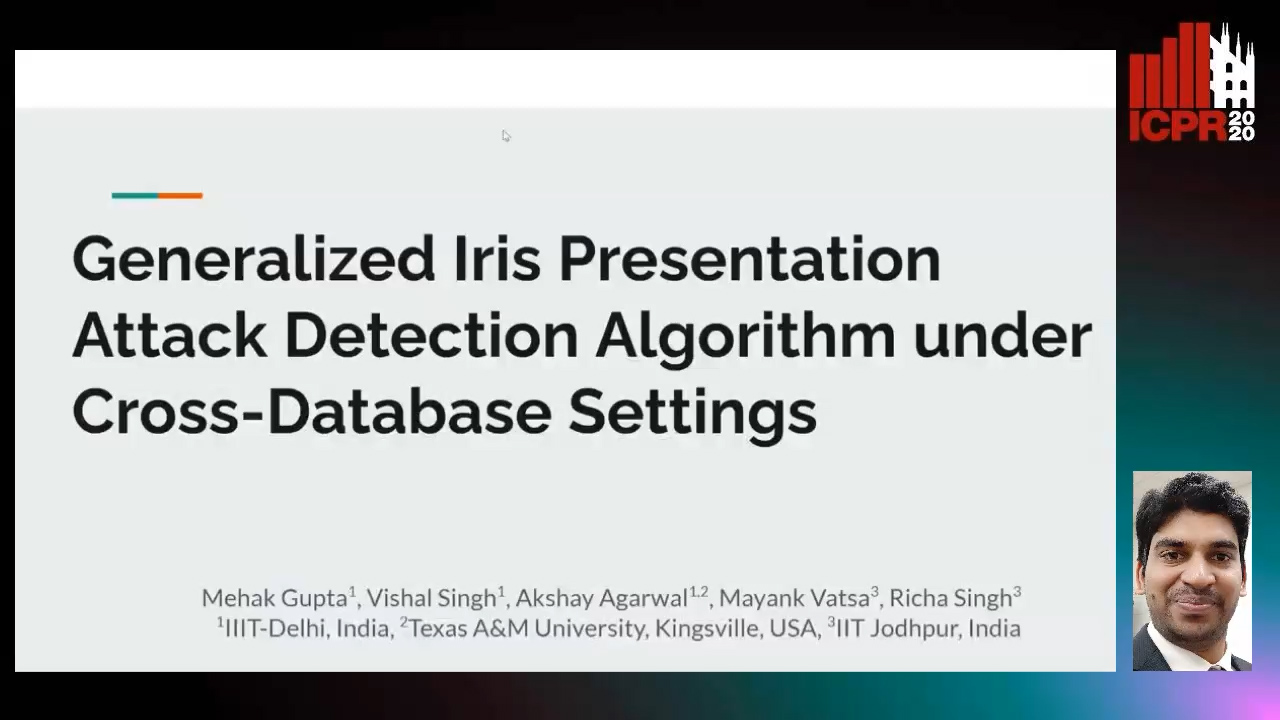
Auto-TLDR; MVNet: A Deep Learning-based PAD Network for Iris Recognition against Presentation Attacks
Similar papers
MixNet for Generalized Face Presentation Attack Detection
Nilay Sanghvi, Sushant Singh, Akshay Agarwal, Mayank Vatsa, Richa Singh

Auto-TLDR; MixNet: A Deep Learning-based Network for Detection of Presentation Attacks in Cross-Database and Unseen Setting
Abstract Slides Poster Similar
Viability of Optical Coherence Tomography for Iris Presentation Attack Detection

Auto-TLDR; Optical Coherence Tomography Imaging for Iris Presentation Attack Detection
Abstract Slides Poster Similar
Local Attention and Global Representation Collaborating for Fine-Grained Classification
He Zhang, Yunming Bai, Hui Zhang, Jing Liu, Xingguang Li, Zhaofeng He
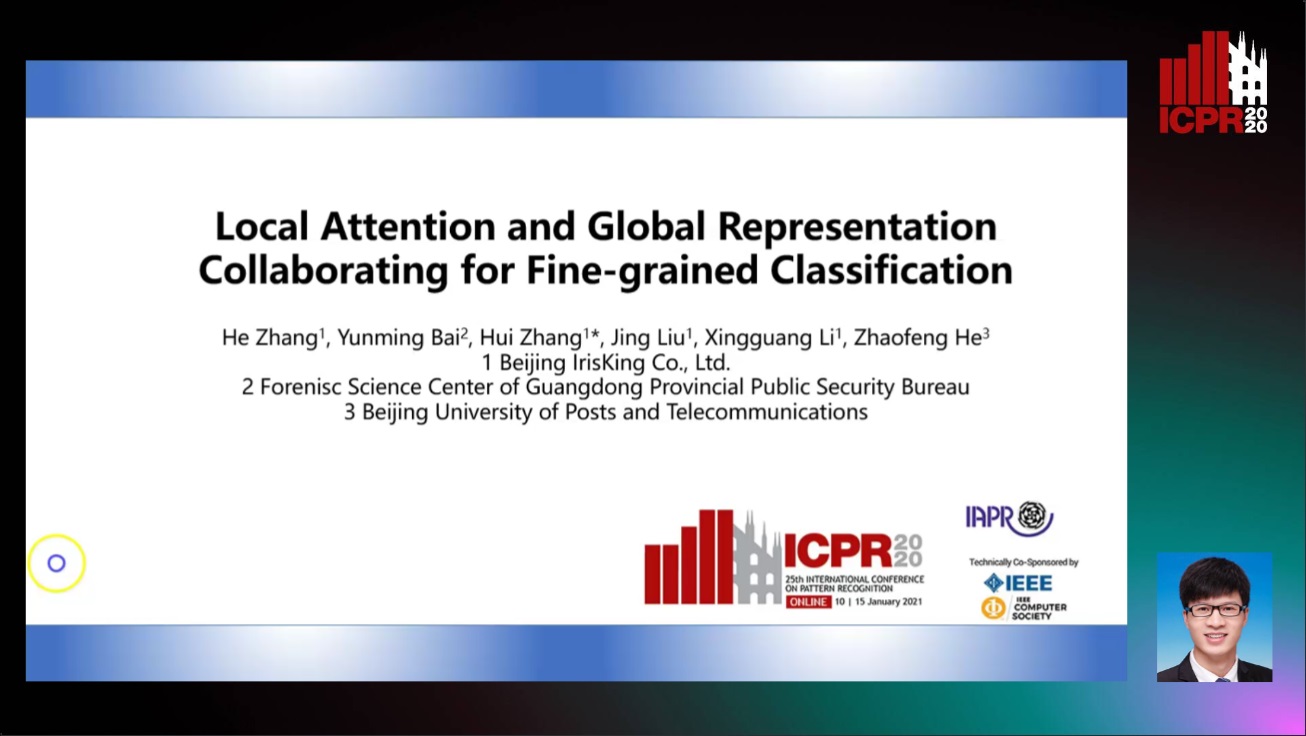
Auto-TLDR; Weighted Region Network for Cosmetic Contact Lenses Detection
Abstract Slides Poster Similar
Face Anti-Spoofing Using Spatial Pyramid Pooling
Lei Shi, Zhuo Zhou, Zhenhua Guo

Auto-TLDR; Spatial Pyramid Pooling for Face Anti-Spoofing
Abstract Slides Poster Similar
Detection of Makeup Presentation Attacks Based on Deep Face Representations
Christian Rathgeb, Pawel Drozdowski, Christoph Busch

Auto-TLDR; An Attack Detection Scheme for Face Recognition Using Makeup Presentation Attacks
Abstract Slides Poster Similar
Face Anti-Spoofing Based on Dynamic Color Texture Analysis Using Local Directional Number Pattern
Junwei Zhou, Ke Shu, Peng Liu, Jianwen Xiang, Shengwu Xiong
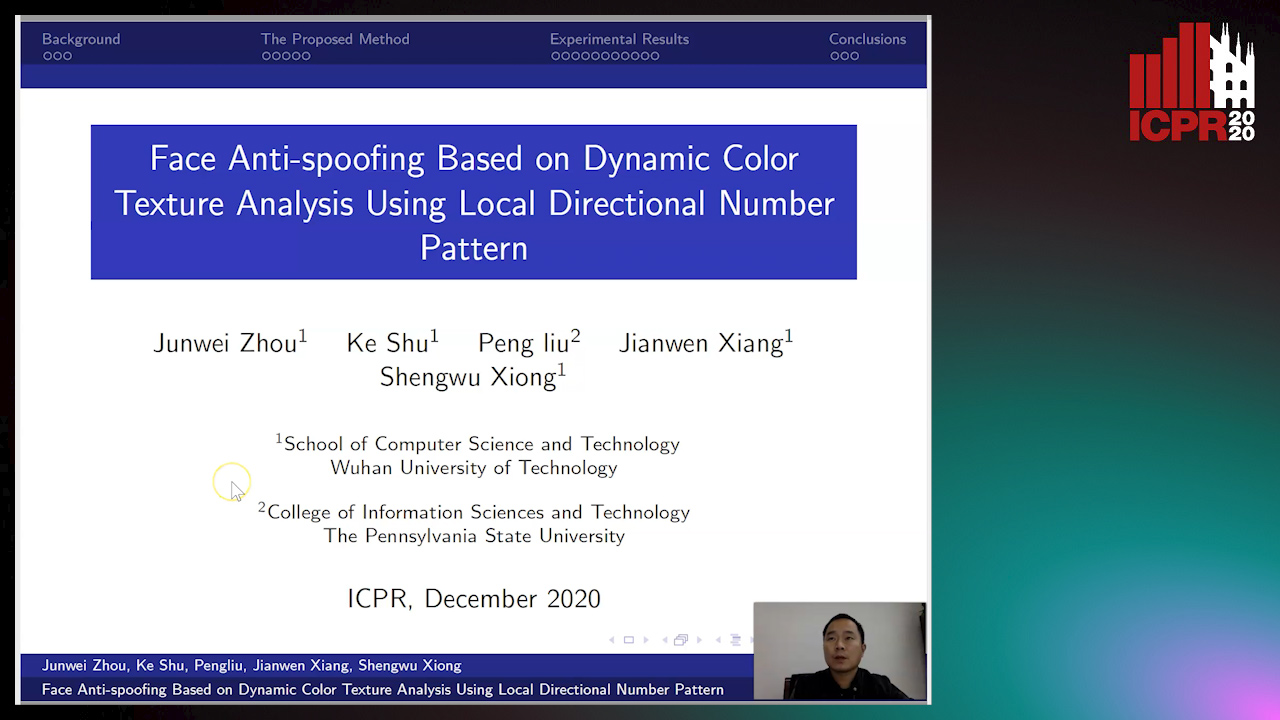
Auto-TLDR; LDN-TOP Representation followed by ProCRC Classification for Face Anti-Spoofing
Abstract Slides Poster Similar
One-Shot Representational Learning for Joint Biometric and Device Authentication

Auto-TLDR; Joint Biometric and Device Recognition from a Single Biometric Image
Abstract Slides Poster Similar
A Cross Domain Multi-Modal Dataset for Robust Face Anti-Spoofing
Qiaobin Ji, Shugong Xu, Xudong Chen, Shan Cao, Shunqing Zhang

Auto-TLDR; Cross domain multi-modal FAS dataset GREAT-FASD and several evaluation protocols for academic community
Abstract Slides Poster Similar
Attack Agnostic Adversarial Defense via Visual Imperceptible Bound
Saheb Chhabra, Akshay Agarwal, Richa Singh, Mayank Vatsa
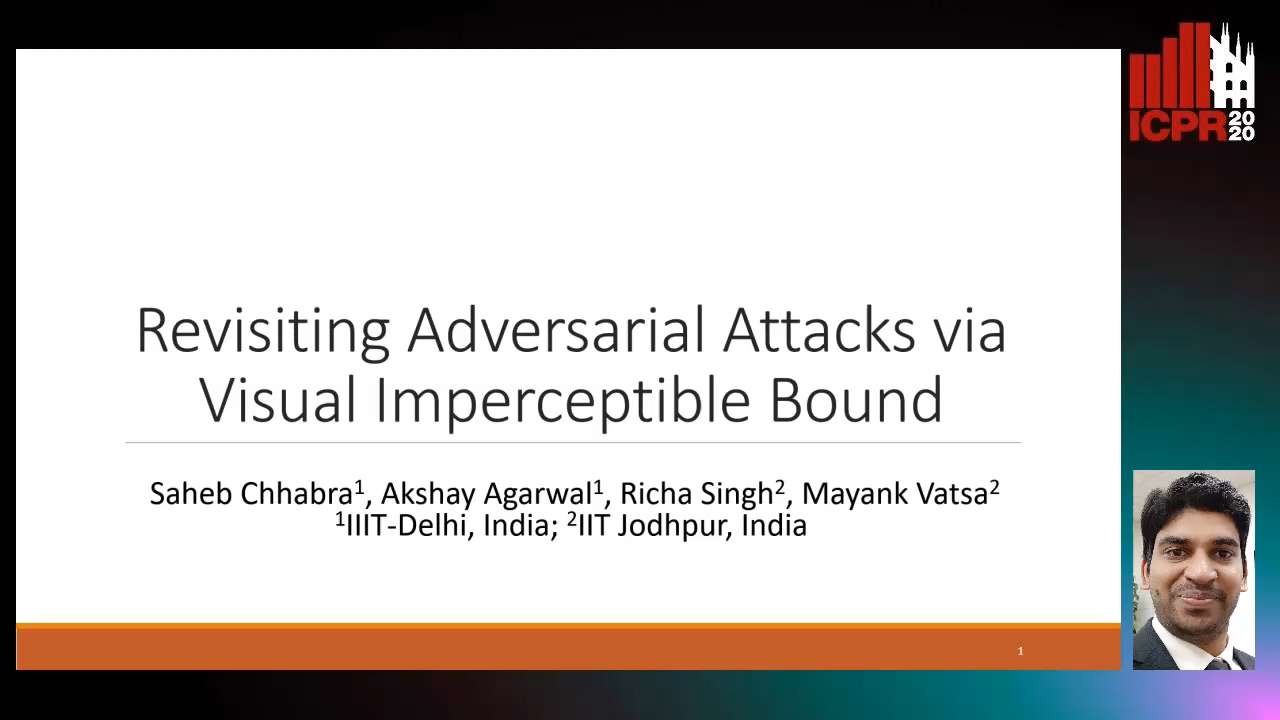
Auto-TLDR; Robust Adversarial Defense with Visual Imperceptible Bound
Abstract Slides Poster Similar
Two-Level Attention-Based Fusion Learning for RGB-D Face Recognition
Hardik Uppal, Alireza Sepas-Moghaddam, Michael Greenspan, Ali Etemad

Auto-TLDR; Fused RGB-D Facial Recognition using Attention-Aware Feature Fusion
Abstract Slides Poster Similar
Disentangled Representation Based Face Anti-Spoofing
Zhao Liu, Zunlei Feng, Yong Li, Zeyu Zou, Rong Zhang, Mingli Song, Jianping Shen
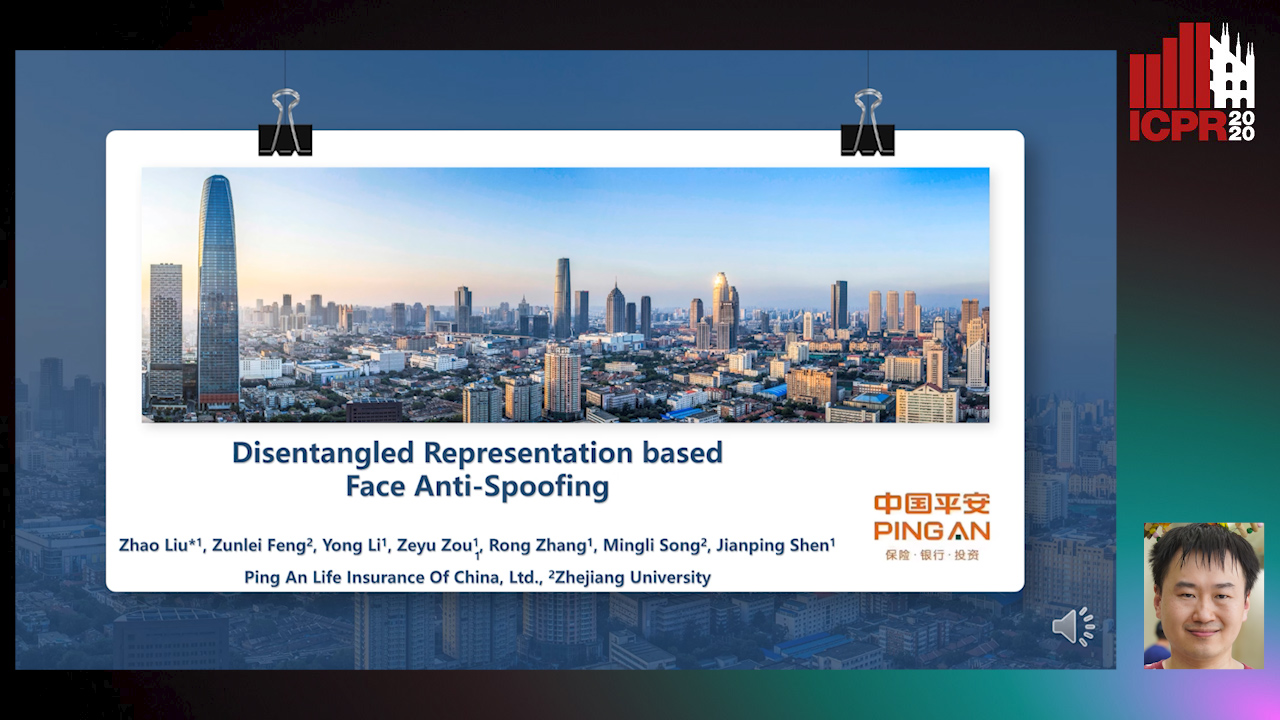
Auto-TLDR; Face Anti-Spoofing using Motion Information and Disentangled Frame Work
Abstract Slides Poster Similar
Are Spoofs from Latent Fingerprints a Real Threat for the Best State-Of-Art Liveness Detectors?
Roberto Casula, Giulia Orrù, Daniele Angioni, Xiaoyi Feng, Gian Luca Marcialis, Fabio Roli

Auto-TLDR; ScreenSpoof: Attacks using latent fingerprints against state-of-art fingerprint liveness detectors and verification systems
Exploring Seismocardiogram Biometrics with Wavelet Transform
Po-Ya Hsu, Po-Han Hsu, Hsin-Li Liu
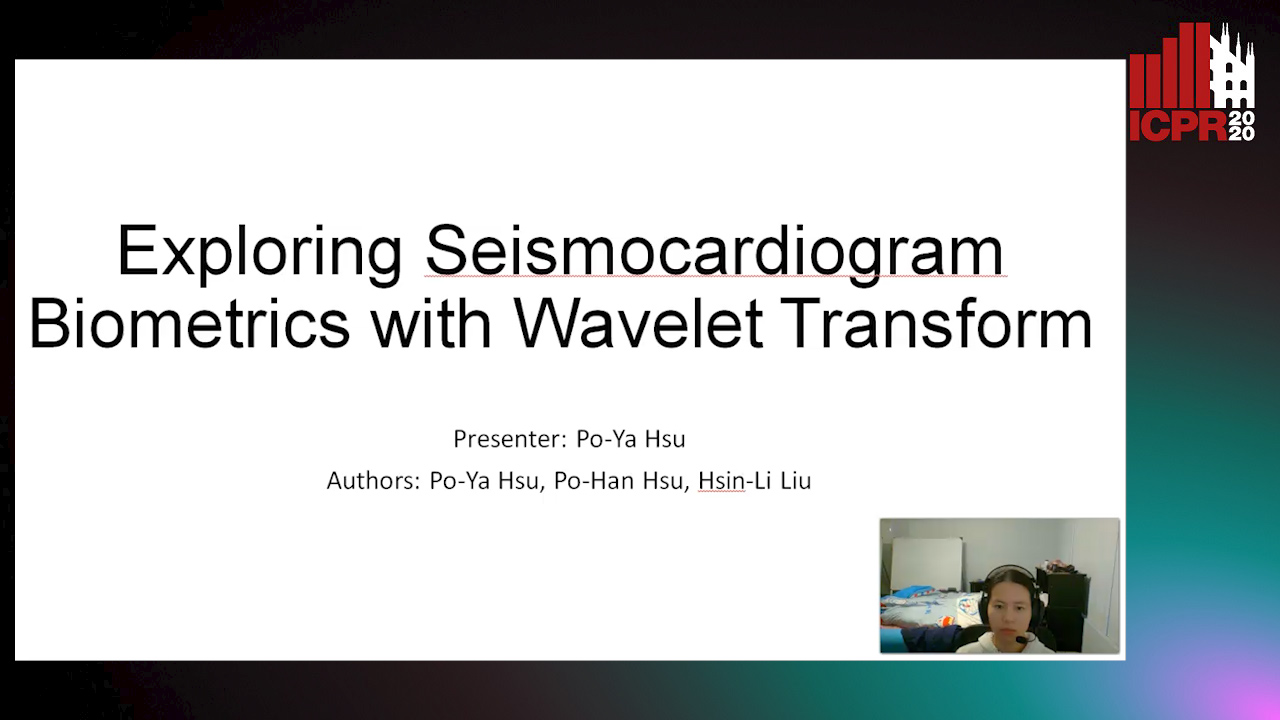
Auto-TLDR; Seismocardiogram Biometric Matching Using Wavelet Transform and Deep Learning Models
Abstract Slides Poster Similar
How Unique Is a Face: An Investigative Study
Michal Balazia, S L Happy, Francois Bremond, Antitza Dantcheva
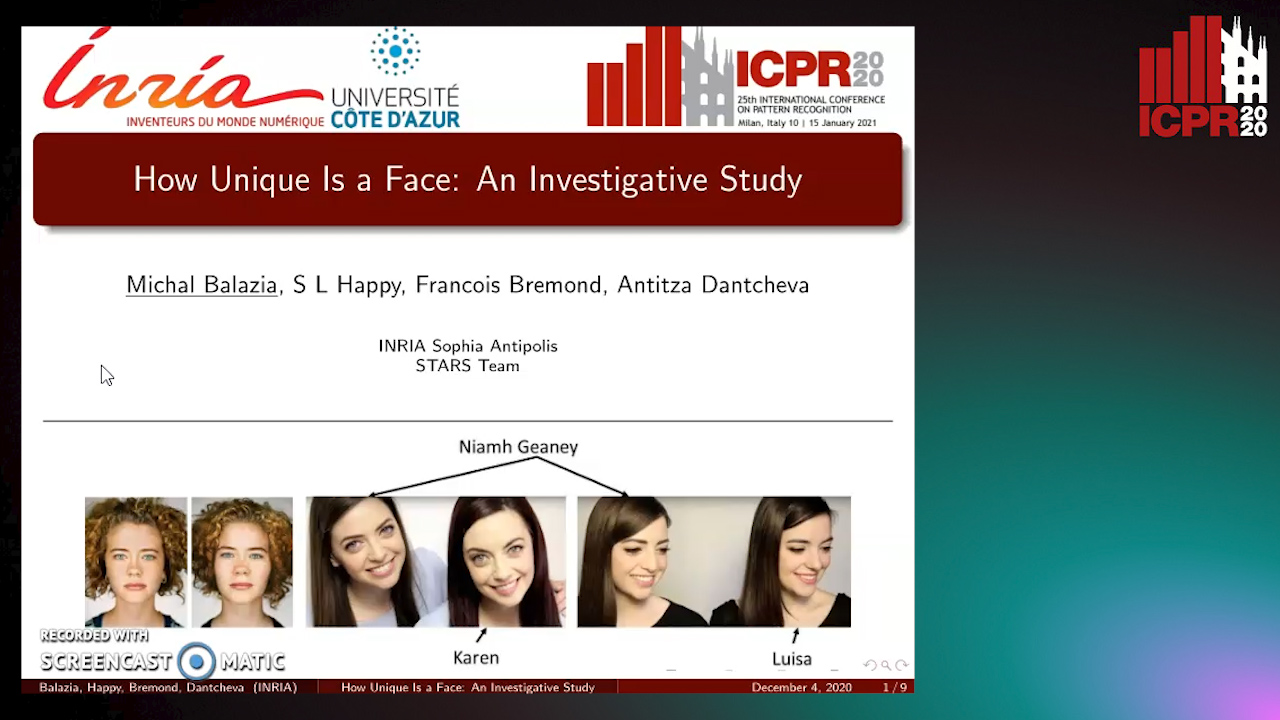
Auto-TLDR; Uniqueness of Face Recognition: Exploring the Impact of Factors such as image resolution, feature representation, database size, age and gender
Abstract Slides Poster Similar
Human or Machine? It Is Not What You Write, but How You Write It
Luis Leiva, Moises Diaz, M.A. Ferrer, Réjean Plamondon
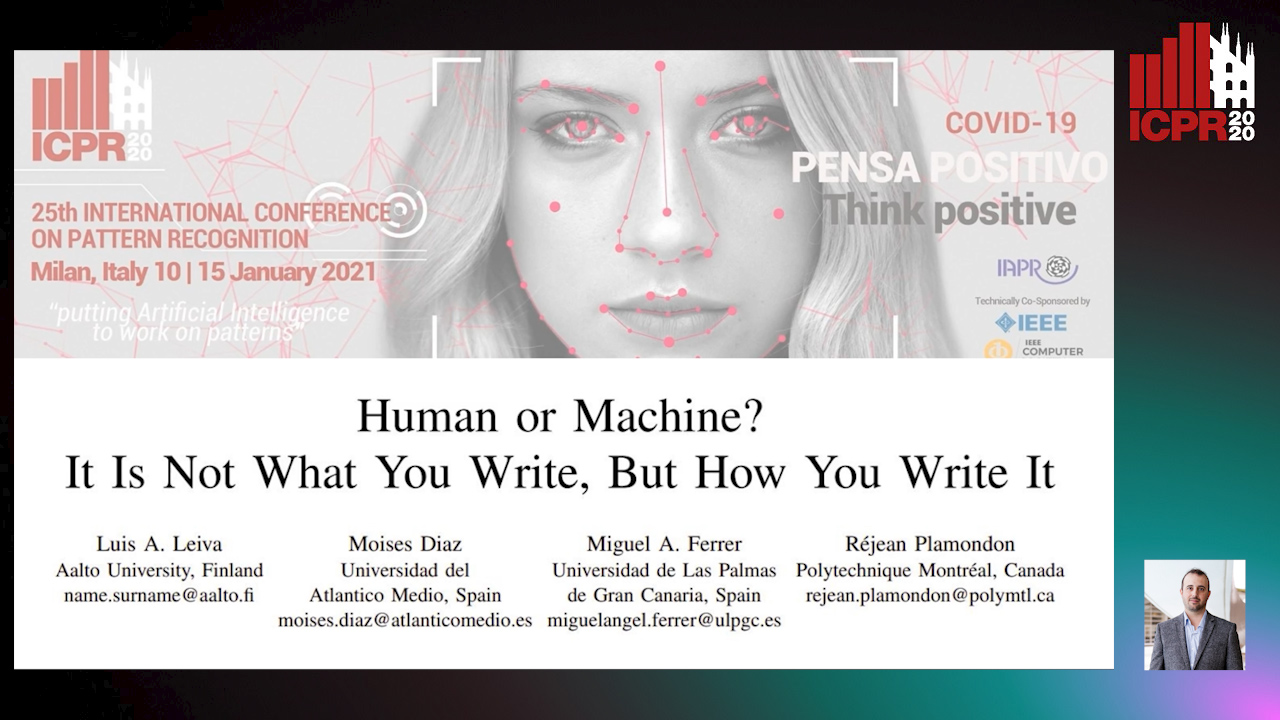
Auto-TLDR; Behavioral Biometrics via Handwritten Symbols for Identification and Verification
Abstract Slides Poster Similar
ResMax: Detecting Voice Spoofing Attacks with Residual Network and Max Feature Map
Il-Youp Kwak, Sungsu Kwag, Junhee Lee, Jun Ho Huh, Choong-Hoon Lee, Youngbae Jeon, Jeonghwan Hwang, Ji Won Yoon
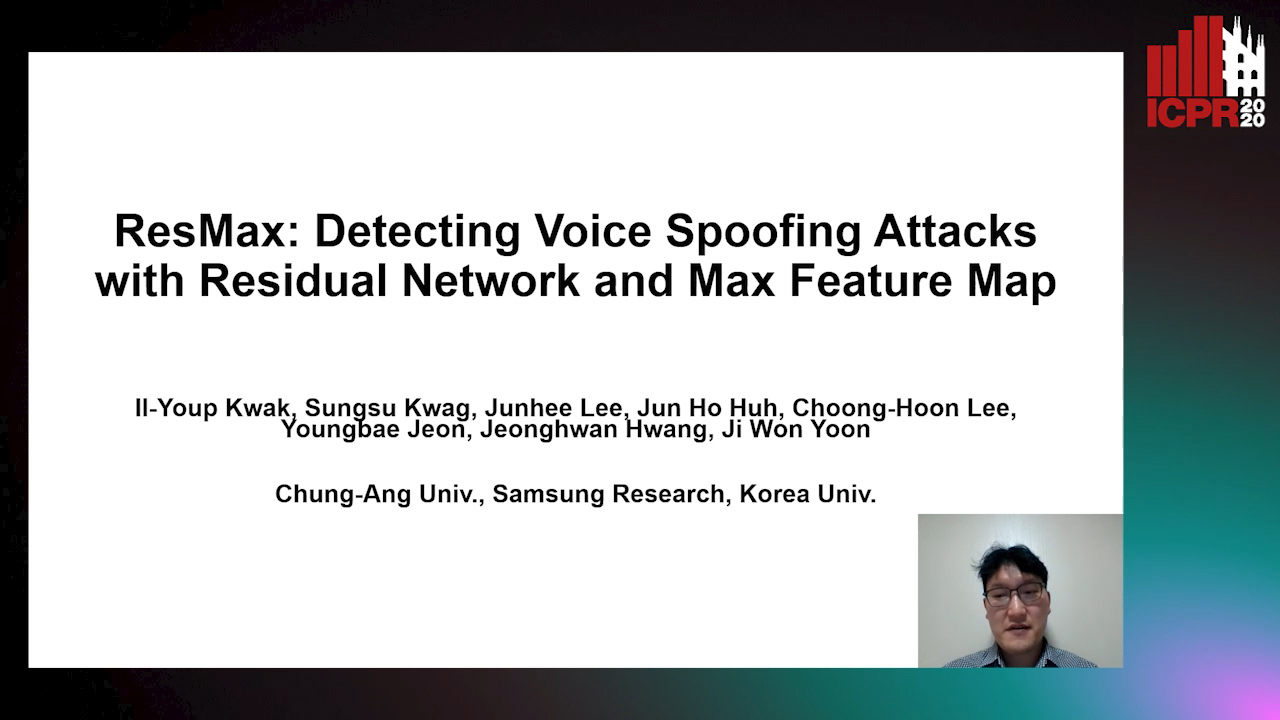
Auto-TLDR; ASVspoof 2019: A Lightweight Automatic Speaker Verification Spoofing and Countermeasures System
Abstract Slides Poster Similar
Writer Identification Using Deep Neural Networks: Impact of Patch Size and Number of Patches
Akshay Punjabi, José Ramón Prieto Fontcuberta, Enrique Vidal

Auto-TLDR; Writer Recognition Using Deep Neural Networks for Handwritten Text Images
Abstract Slides Poster Similar
CQNN: Convolutional Quadratic Neural Networks

Auto-TLDR; Quadratic Neural Network for Image Classification
Abstract Slides Poster Similar
Merged 1D-2D Deep Convolutional Neural Networks for Nerve Detection in Ultrasound Images
Mohammad Alkhatib, Adel Hafiane, Pierre Vieyres
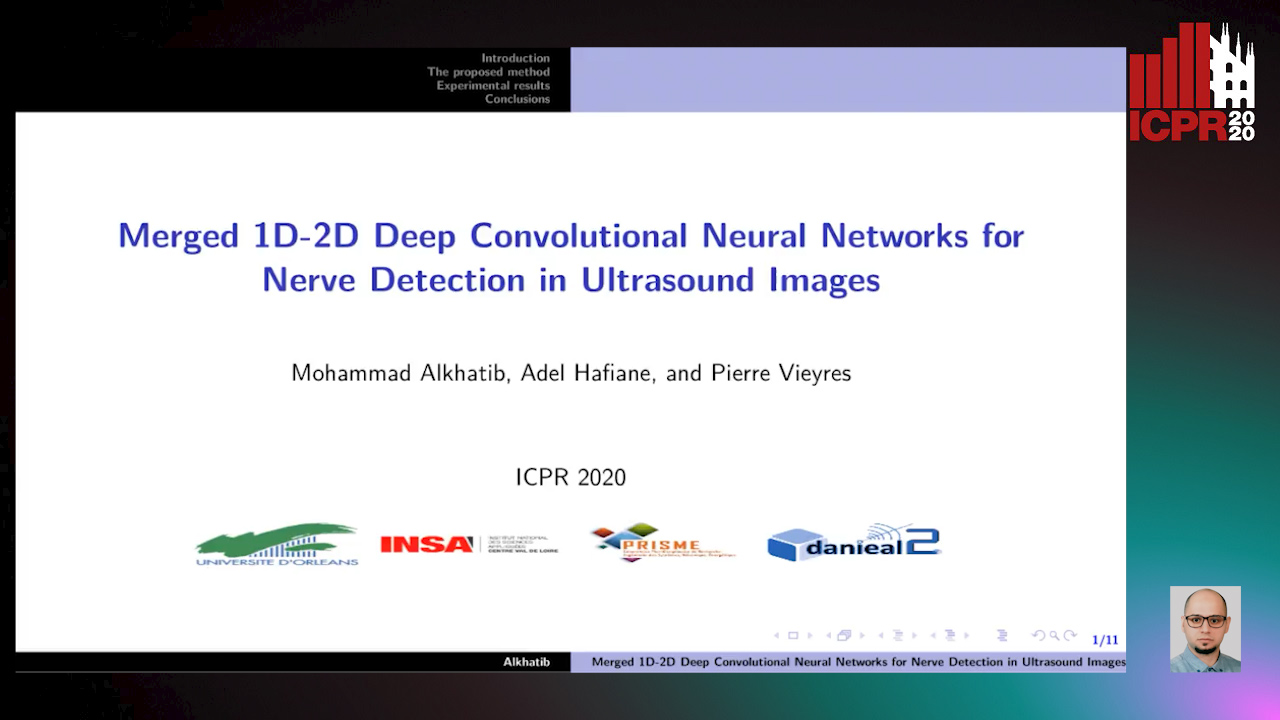
Auto-TLDR; A Deep Neural Network for Deep Neural Networks to Detect Median Nerve in Ultrasound-Guided Regional Anesthesia
Abstract Slides Poster Similar
Investigating and Exploiting Image Resolution for Transfer Learning-Based Skin Lesion Classification
Amirreza Mahbod, Gerald Schaefer, Chunliang Wang, Rupert Ecker, Georg Dorffner, Isabella Ellinger

Auto-TLDR; Fine-tuned Neural Networks for Skin Lesion Classification Using Dermoscopic Images
Abstract Slides Poster Similar
Dynamically Mitigating Data Discrepancy with Balanced Focal Loss for Replay Attack Detection
Yongqiang Dou, Haocheng Yang, Maolin Yang, Yanyan Xu, Dengfeng Ke
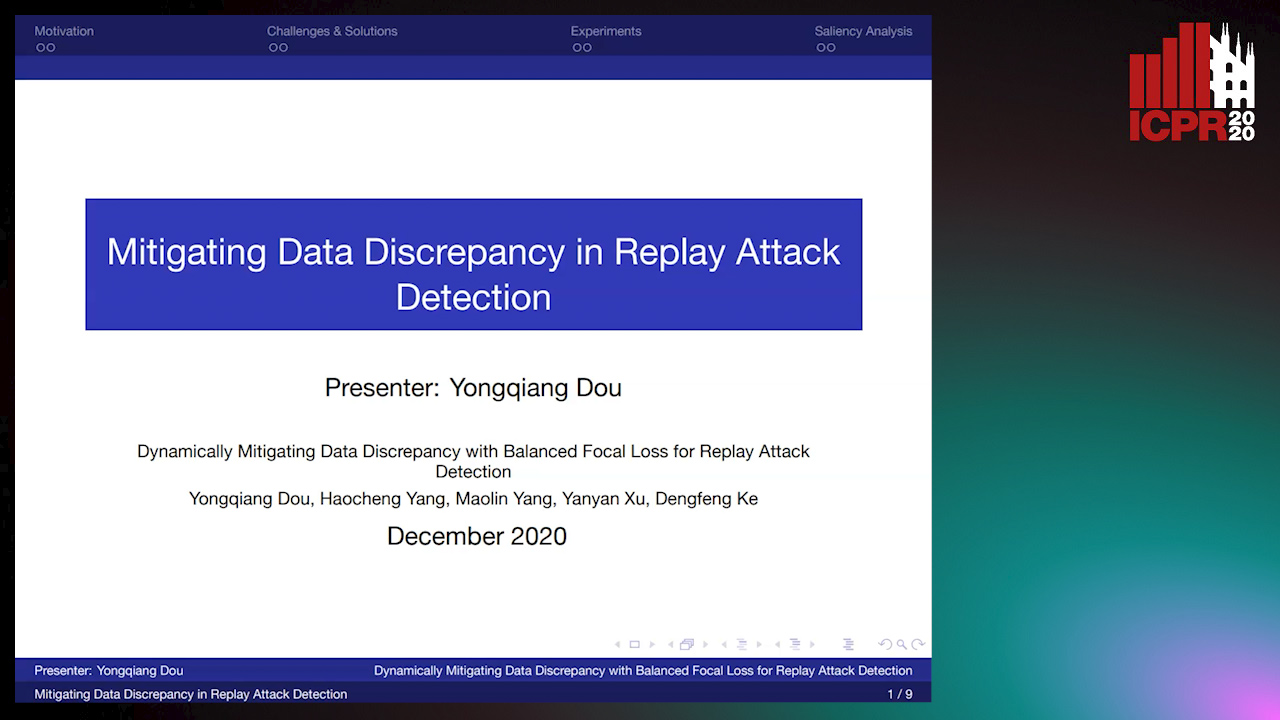
Auto-TLDR; Anti-Spoofing with Balanced Focal Loss Function and Combination Features
Abstract Slides Poster Similar
A Versatile Crack Inspection Portable System Based on Classifier Ensemble and Controlled Illumination
Milind Gajanan Padalkar, Carlos Beltran-Gonzalez, Matteo Bustreo, Alessio Del Bue, Vittorio Murino
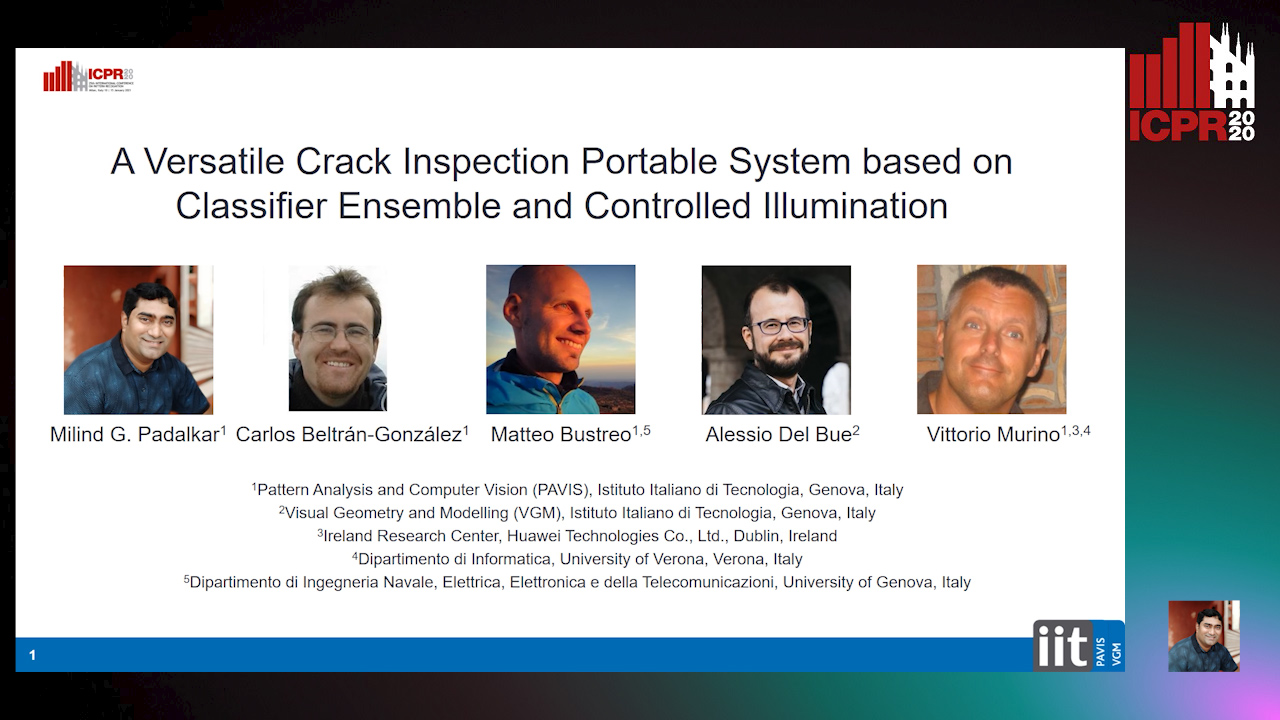
Auto-TLDR; Lighting Conditions for Crack Detection in Ceramic Tile
Abstract Slides Poster Similar
Enhancing Semantic Segmentation of Aerial Images with Inhibitory Neurons
Ihsan Ullah, Sean Reilly, Michael Madden

Auto-TLDR; Lateral Inhibition in Deep Neural Networks for Object Recognition and Semantic Segmentation
Abstract Slides Poster Similar
Inception Based Deep Learning Architecture for Tuberculosis Screening of Chest X-Rays
Dipayan Das, K.C. Santosh, Umapada Pal
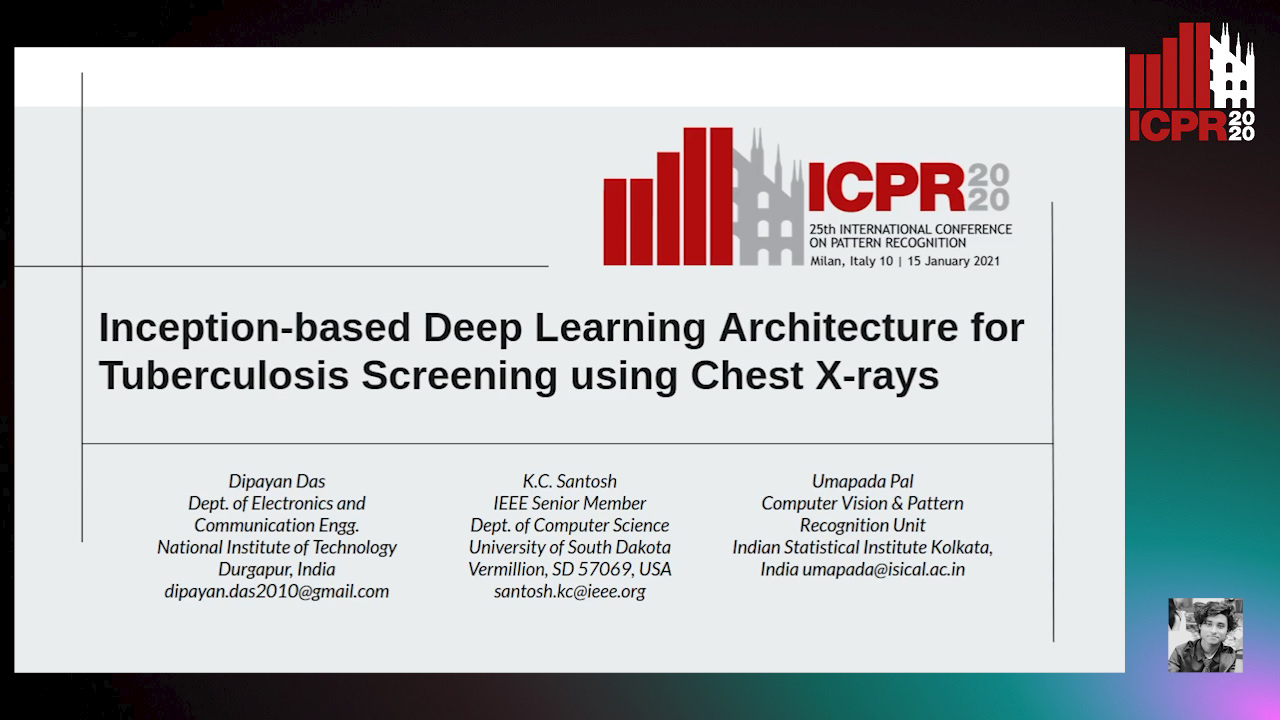
Auto-TLDR; End to End CNN-based Chest X-ray Screening for Tuberculosis positive patients in the severely resource constrained regions of the world
Abstract Slides Poster Similar
Quality-Based Representation for Unconstrained Face Recognition
Nelson Méndez-Llanes, Katy Castillo-Rosado, Heydi Mendez-Vazquez, Massimo Tistarelli

Auto-TLDR; activation map for face recognition in unconstrained environments
Finger Vein Recognition and Intra-Subject Similarity Evaluation of Finger Veins Using the CNN Triplet Loss
Georg Wimmer, Bernhard Prommegger, Andreas Uhl

Auto-TLDR; Finger vein recognition using CNNs and hard triplet online selection
Abstract Slides Poster Similar
Unconstrained Facial Expression Recogniton Based on Cascade Decision and Gabor Filters
Yanhong Wu, Lijie Zhang, Guannan Chen, Pablo Navarrete Michelini
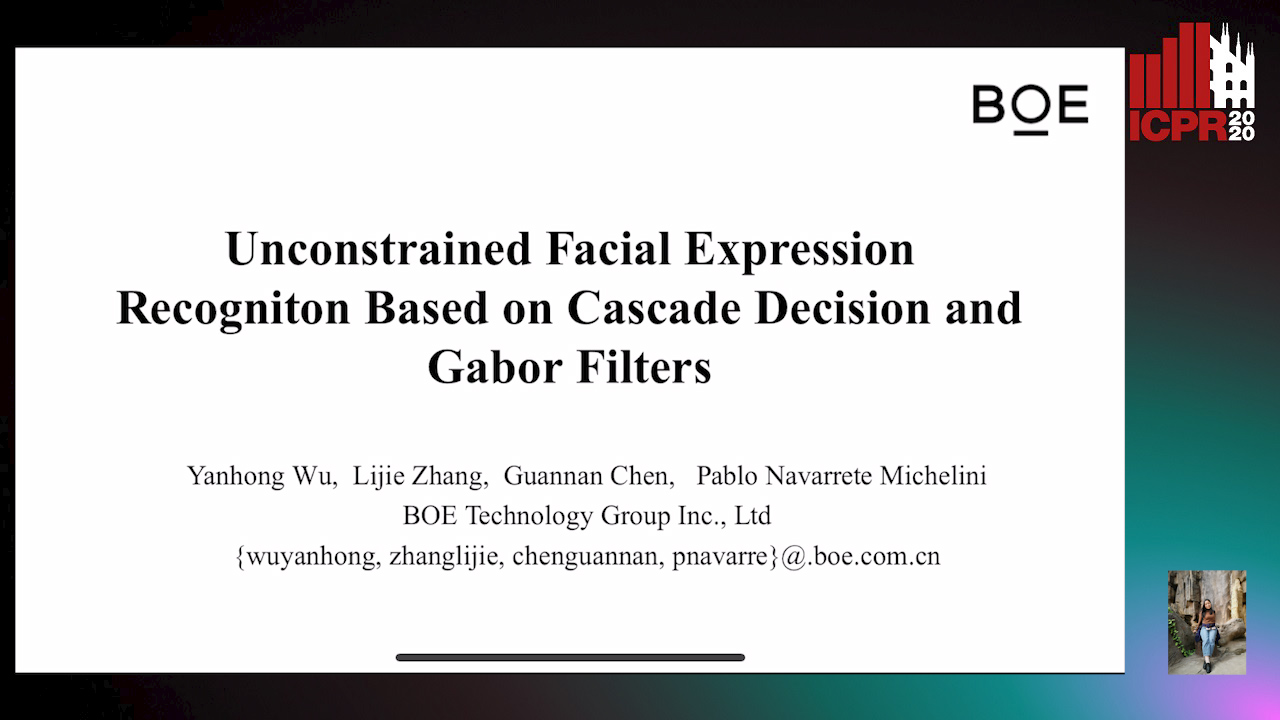
Auto-TLDR; Convolutional Neural Network for Facial Expression Recognition under unconstrained natural conditions
Estimation of Abundance and Distribution of SaltMarsh Plants from Images Using Deep Learning
Jayant Parashar, Suchendra Bhandarkar, Jacob Simon, Brian Hopkinson, Steven Pennings
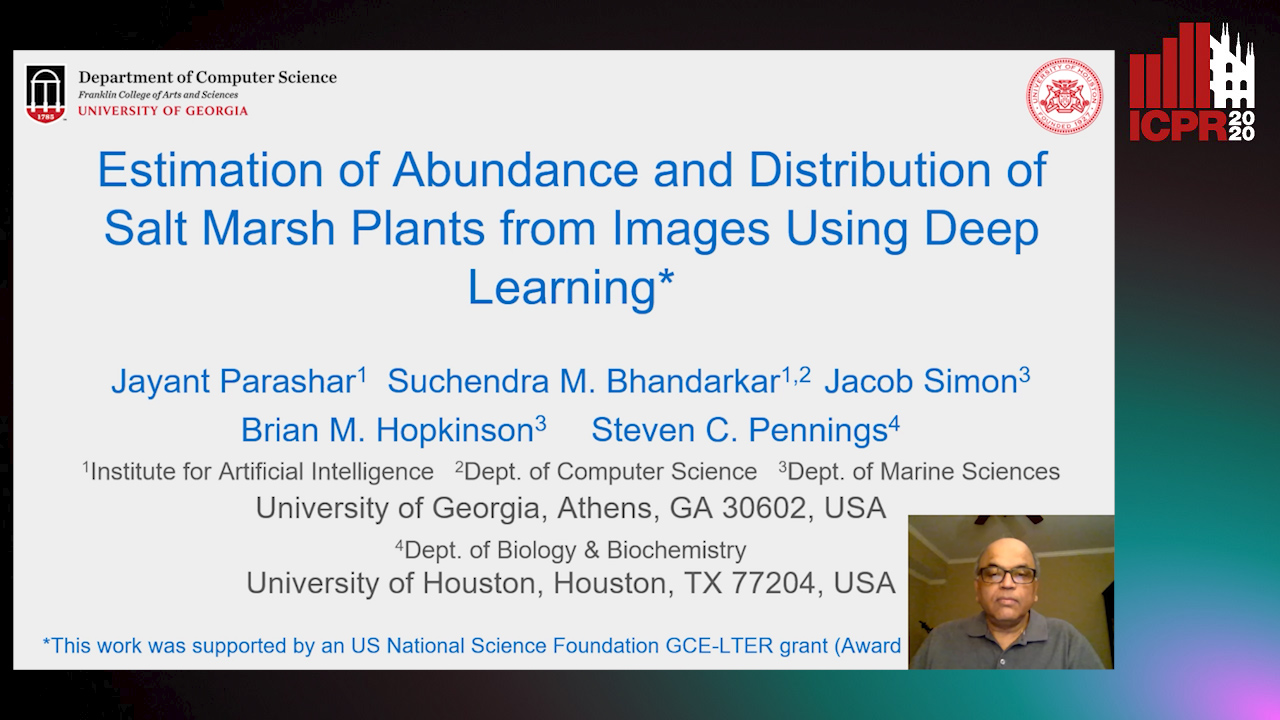
Auto-TLDR; CNN-based approaches to automated plant identification and localization in salt marsh images
BAT Optimized CNN Model Identifies Water Stress in Chickpea Plant Shoot Images
Shiva Azimi, Taranjit Kaur, Tapan Gandhi

Auto-TLDR; BAT Optimized ResNet-18 for Stress Classification of chickpea shoot images under water deficiency
Abstract Slides Poster Similar
Lightweight Low-Resolution Face Recognition for Surveillance Applications
Yoanna Martínez-Díaz, Heydi Mendez-Vazquez, Luis S. Luevano, Leonardo Chang, Miguel Gonzalez-Mendoza

Auto-TLDR; Efficiency of Lightweight Deep Face Networks on Low-Resolution Surveillance Imagery
Abstract Slides Poster Similar
Super-Resolution Guided Pore Detection for Fingerprint Recognition
Syeda Nyma Ferdous, Ali Dabouei, Jeremy Dawson, Nasser M. Nasarabadi

Auto-TLDR; Super-Resolution Generative Adversarial Network for Fingerprint Recognition Using Pore Features
Abstract Slides Poster Similar
Weight Estimation from an RGB-D Camera in Top-View Configuration
Marco Mameli, Marina Paolanti, Nicola Conci, Filippo Tessaro, Emanuele Frontoni, Primo Zingaretti

Auto-TLDR; Top-View Weight Estimation using Deep Neural Networks
Abstract Slides Poster Similar
3D Facial Matching by Spiral Convolutional Metric Learning and a Biometric Fusion-Net of Demographic Properties
Soha Sadat Mahdi, Nele Nauwelaers, Philip Joris, Giorgos Bouritsas, Imperial London, Sergiy Bokhnyak, Susan Walsh, Mark Shriver, Michael Bronstein, Peter Claes

Auto-TLDR; Multi-biometric Fusion for Biometric Verification using 3D Facial Mesures
Creating Classifier Ensembles through Meta-Heuristic Algorithms for Aerial Scene Classification
Álvaro Roberto Ferreira Jr., Gustavo Gustavo Henrique De Rosa, Joao Paulo Papa, Gustavo Carneiro, Fabio Augusto Faria

Auto-TLDR; Univariate Marginal Distribution Algorithm for Aerial Scene Classification Using Meta-Heuristic Optimization
Abstract Slides Poster Similar
Activity Recognition Using First-Person-View Cameras Based on Sparse Optical Flows
Peng-Yuan Kao, Yan-Jing Lei, Chia-Hao Chang, Chu-Song Chen, Ming-Sui Lee, Yi-Ping Hung

Auto-TLDR; 3D Convolutional Neural Network for Activity Recognition with FPV Videos
Abstract Slides Poster Similar
Hybrid Network for End-To-End Text-Independent Speaker Identification
Wajdi Ghezaiel, Luc Brun, Olivier Lezoray

Auto-TLDR; Text-Independent Speaker Identification with Scattering Wavelet Network and Convolutional Neural Networks
Abstract Slides Poster Similar
Comparison of Deep Learning and Hand Crafted Features for Mining Simulation Data
Theodoros Georgiou, Sebastian Schmitt, Thomas Baeck, Nan Pu, Wei Chen, Michael Lew
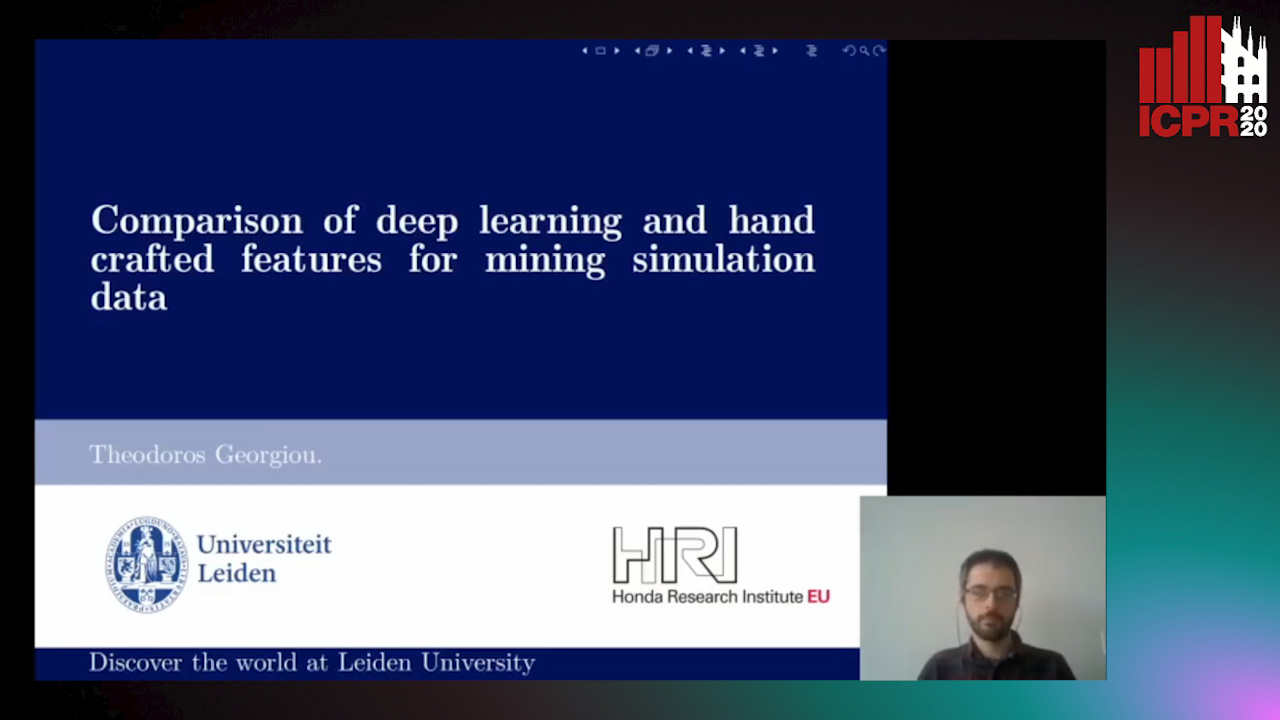
Auto-TLDR; Automated Data Analysis of Flow Fields in Computational Fluid Dynamics Simulations
Abstract Slides Poster Similar
Real Time Fencing Move Classification and Detection at Touch Time During a Fencing Match
Cem Ekin Sunal, Chris G. Willcocks, Boguslaw Obara

Auto-TLDR; Fencing Body Move Classification and Detection Using Deep Learning
Facial Expression Recognition Using Residual Masking Network
Luan Pham, Vu Huynh, Tuan Anh Tran

Auto-TLDR; Deep Residual Masking for Automatic Facial Expression Recognition
Abstract Slides Poster Similar
Attention Pyramid Module for Scene Recognition
Zhinan Qiao, Xiaohui Yuan, Chengyuan Zhuang, Abolfazl Meyarian

Auto-TLDR; Attention Pyramid Module for Multi-Scale Scene Recognition
Abstract Slides Poster Similar
Multimodal Side-Tuning for Document Classification
Stefano Zingaro, Giuseppe Lisanti, Maurizio Gabbrielli

Auto-TLDR; Side-tuning for Multimodal Document Classification
Abstract Slides Poster Similar
Adaptive Feature Fusion Network for Gaze Tracking in Mobile Tablets
Yiwei Bao, Yihua Cheng, Yunfei Liu, Feng Lu

Auto-TLDR; Adaptive Feature Fusion Network for Multi-stream Gaze Estimation in Mobile Tablets
Abstract Slides Poster Similar
Beyond Cross-Entropy: Learning Highly Separable Feature Distributions for Robust and Accurate Classification
Arslan Ali, Andrea Migliorati, Tiziano Bianchi, Enrico Magli

Auto-TLDR; Gaussian class-conditional simplex loss for adversarial robust multiclass classifiers
Abstract Slides Poster Similar
Attack-Agnostic Adversarial Detection on Medical Data Using Explainable Machine Learning
Matthew Watson, Noura Al Moubayed

Auto-TLDR; Explainability-based Detection of Adversarial Samples on EHR and Chest X-Ray Data
Abstract Slides Poster Similar
Video Face Manipulation Detection through Ensemble of CNNs
Nicolo Bonettini, Edoardo Daniele Cannas, Sara Mandelli, Luca Bondi, Paolo Bestagini, Stefano Tubaro

Auto-TLDR; Face Manipulation Detection in Video Sequences Using Convolutional Neural Networks
A Systematic Investigation on Deep Architectures for Automatic Skin Lesions Classification
Pierluigi Carcagni, Marco Leo, Andrea Cuna, Giuseppe Celeste, Cosimo Distante

Auto-TLDR; RegNet: Deep Investigation of Convolutional Neural Networks for Automatic Classification of Skin Lesions
Abstract Slides Poster Similar
Epileptic Seizure Prediction: A Semi-Dilated Convolutional Neural Network Architecture
Ramy Hussein, Rabab K. Ward, Soojin Lee, Martin Mckeown
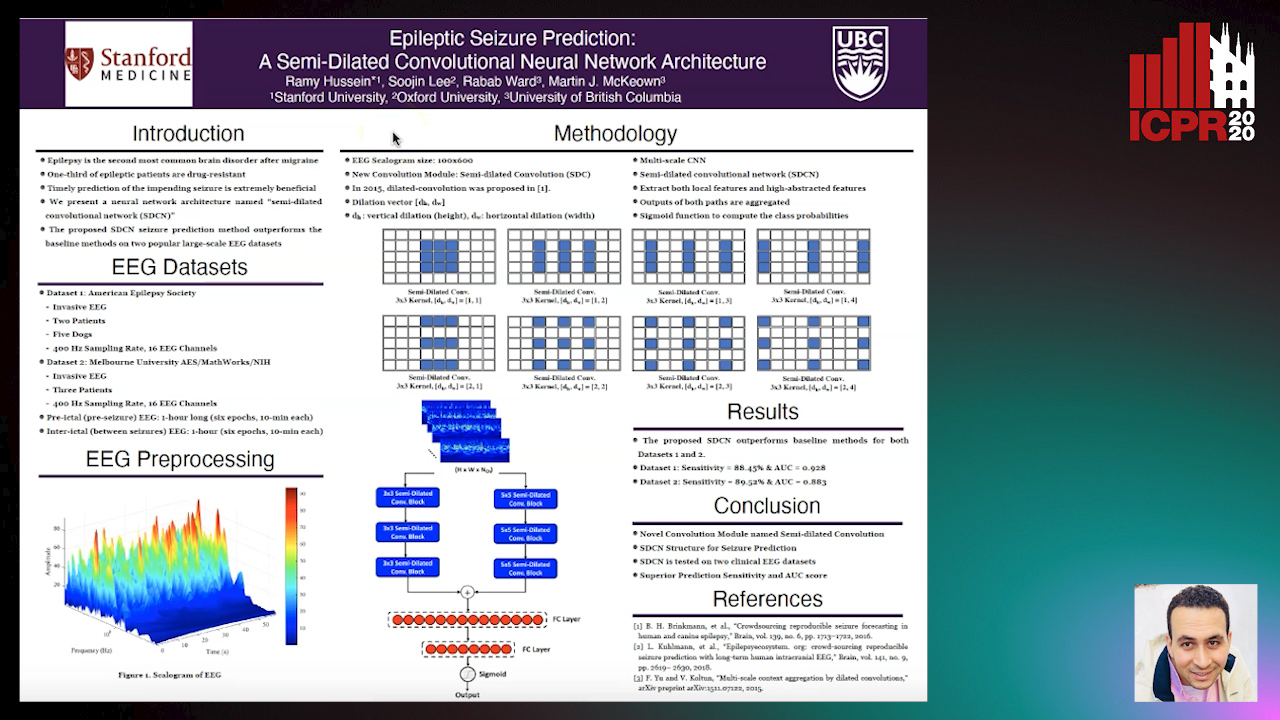
Auto-TLDR; Semi-Dilated Convolutional Network for Seizure Prediction using EEG Scalograms
Documents Counterfeit Detection through a Deep Learning Approach
Darwin Danilo Saire Pilco, Salvatore Tabbone

Auto-TLDR; End-to-End Learning for Counterfeit Documents Detection using Deep Neural Network
Abstract Slides Poster Similar